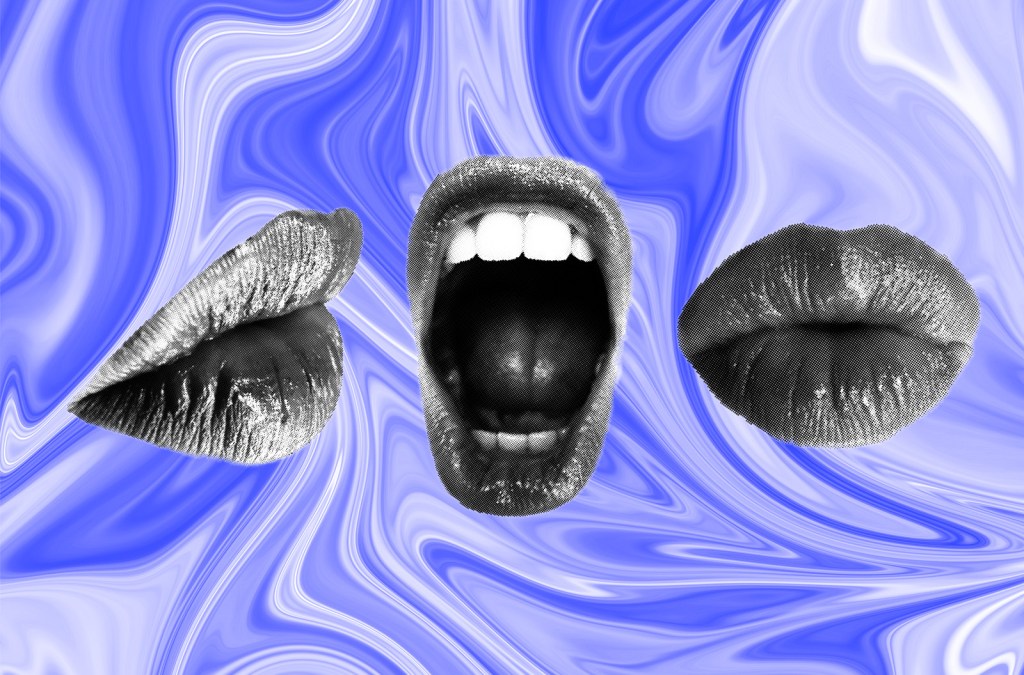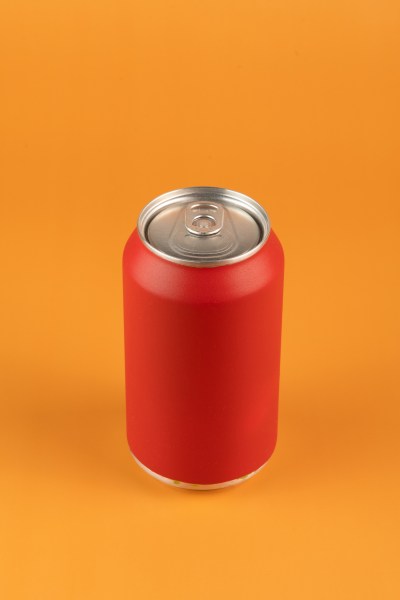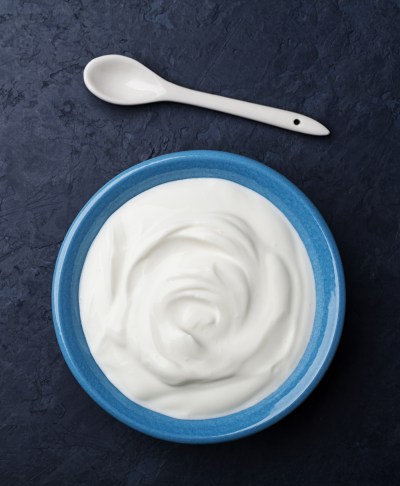Saliva: The Unsung Hero Of Taste
7:33 minutes

How good are you at tasting what you eat? Not just gulping food down, but actually savoring the flavor? When you think about how taste works, you may think about your tongue and taste buds, and how they send information about your food info to your brain. But there’s an overlooked—and understudied—hero in this story: saliva.
That may sound strange, since part of saliva’s job is to help us chew, swallow, talk, and even digest. But saliva is much more interesting and complicated than that.
Ira talks with Chris Gorski, editor at Chemical & Engineering News, who reported this story about taste and saliva for Knowable Magazine earlier this year. (Check out Gorski’s full story.)
And if you want to put your saliva to the test, Science Friday designed this activity for you to try at home with some of the ingredients mentioned in Gorski’s article. Please note that these certainly aren’t failproof, measurable experiments, just an activity to test your taste.
Please be careful of allergens. Children should have adult supervision.

Take two cans of soda. Open one and wait for it to go totally flat, which might take a day. When you’re ready to do the experiment, open the second can.
Take a sip of the flat one. Think: What flavors are you picking up? How does it feel? How sweet is it?
Then, take a sip of the fizzy soda. Does it taste different to you? If so, why do you think that is?
The flat soda will probably taste sweeter than the fresh can. One assumption was that this happened because the carbonation of the fizzy soda is so acidic that it distracts your brain from other flavors, like sweetness. But—surprise, surprise—that difference may be due to saliva instead. A study from 2021 found that saliva can actually keep the soda’s bubbles, and their flavor, from reaching your taste buds. “With flat soda, no bubbles build up to block the sweet taste,” Gorski wrote.

You’ll need two cups of yogurt for a blind taste test: one that’s low-fat, and another that’s high-fat. To keep the experiment controlled, make sure they’re the same flavor of yogurt from the same brand.
Without knowing which is which, have someone give you a spoon of each yogurt. Can you tell which one is high-fat and which is low-fat? How does the yogurt feel in your mouth?
The difference comes down to mouthfeel—the physical sensation of eating food. The low-fat yogurt should feel drier, whereas the other will feel creamier. Dr. Anwesha Sarkar, a food scientist at the UK’s University of Leeds, told Gorski the fat in milk combines with your saliva to create a gooey layer in your mouth. That can cover up the tartness of yogurt, and make it feel richer compared to yogurts that don’t have as much fat.
Dr. Sarkar joined us earlier this year to talk about the mouthfeel of chocolate. (Check out her conversation with Ira.)

Taste and smell are closely related. They’re both part of the olfactory system, which senses smell. This next experiment is modeled after a study from researchers in Spain, who studied the saliva of volunteers who sniffed wine. For this experiment, you’ll need a glass of wine. As you take a sip, also make sure to get a good sniff of the wine. The aromatics will travel through your nose and also through your mouth, up into the sensory areas of your nasal passages.
The scientists in that study from Spain had fancy tools to measure the flow of saliva in the wine-tasters’ mouths. Since you can’t really do that at home, try making your mouth extra saliva-y. Take a sip of wine. Note the flavors that you pick up.
Now, make your mouth really dry. Try leaving your mouth open and breathing through it for a minute. Now, take a sip of wine before saliva fills your mouth again. What is the flavor like?
Think about what you tasted. Did the wine taste different? In that study, scientists found that participants with more saliva in their mouth graded the wine’s flavor as more intense. That could be because they swallowed more often, which caused more of the wine’s aromas to travel up their nasal passages.
“So wine enthusiasts proud of their ability to detect nuances of aroma may have their spit to thank, at least in part,” Gorski wrote.
Chris Gorski is an editor at Chemical & Engineering News, in College Park, Maryland.
IRA FLATOW: This is Science Friday. I’m Ira Flatow.
How good are you at tasting what you eat? I mean, not gulping down your food, but actually savoring the flavor. When you think about how taste works, your mind goes to your tongue and your taste buds, right, and how they send food info to your brain. But there’s an overlooked and understudied hero in this story. And I’m talking saliva.
Now, I know how strange that sounds. Saliva’s job is to help us chew and swallow and talk. And my biology teacher taught that it was the first step in digestion. But its role might be bigger and more interesting than that.
Here to spit out the details– sorry– of the science of saliva is Chris Gorski, editor at Chemical and Engineering News, who reported this story for Knowable Magazine earlier this year. Chris joins us from College Park, Maryland.
Welcome to Science Friday.
CHRIS GORSKI: Thanks, Ira. It’s good to be here.
IRA FLATOW: OK, Chris, what got you wondering about saliva? I mean, was your mouth watering about something or what?
CHRIS GORSKI: I was reading these academic journals. And quite often, these are pretty dry collections of prose. And in papers, I was reading food researchers writing things like, we are far from understanding the process from first bite to swallowing food. And so I’m reading those things thinking that food science has been around for a while and we’ve always known that there was saliva, so how can this be?
IRA FLATOW: All right. Let’s talk about chemically. How does saliva work? I mentioned that I learned in school that saliva was the first step in digestion. But you’ve learned a lot more interesting stuff, right?
CHRIS GORSKI: The first thing is it’s 99% water. But what’s amazing about that is that remaining 1% does an awful lot to our food and our drink. Saliva is in there, and any bit of food or any molecule that’s in your mouth, in order to get to a taste bud, it’s dissolving in saliva and it’s interacting before it gets to your taste bud.
The other thing that’s important to think about is taste and flavor. Taste is sweet, sour, bitter, those things. And flavor is the whole experience, the smell before you start eating something, the smell that happens in your mouth when saliva is interacting with the food. And then, moving into the back part of your nasal cavity and you’re still smelling it, that’s happening too.
IRA FLATOW: So saliva is sort of a mediator, then. It could change our experience about how we taste and smell?
CHRIS GORSKI: Absolutely. Absolutely. And so when you drink soda, if it’s bubbly and fresh and all carbonated, you are getting an interaction that’s happening between your mouth, the bubbles, the sugar in the soda. And for a long time, researchers have thought that there was an acid happening in the soda and that is perhaps why, if you let that soda flatten out, sit on the counter for a couple of hours, it might taste sweeter when it’s flat. But why is that?
IRA FLATOW: Right. We think if there’s no more bubbles, the carbonation, which makes it acidic, would be gone, right? So you wouldn’t have it tasting acidic.
CHRIS GORSKI: Right. There were some researchers who decided to investigate that with an artificial mouth. And they put in saliva, and they tried to figure out what was going on. What they saw was that bubbles themselves got between– well, they blocked up the passageway where the sugar molecules would have been going to the taste buds.
So if you’ve got bubbles, it might taste less sweet not because of the acid, but because there’s a physical blockage happening and stopping the sugar molecules from getting to your taste buds.
IRA FLATOW: They used an artificial mouth with an artificial tongue here?
CHRIS GORSKI: Yeah. I think that was another thing that I learned about was the way that the texture feelings in the mouth depend on saliva as well. You might have a yogurt that’s been thickened up so that it looks like a full-fat yogurt when you pour it out, but your tongue can tell the difference. Your tongue can tell that the same amount of fat is not there because your saliva and the fat interact and lubricate everything. And that’s where you get that really satisfying feeling that happens if you eat an ice cream or a rich yogurt.
IRA FLATOW: Yeah. What about saliva and smell? I know the taste and smell are intertwined. We’ve talked about that. Does spit affect what you sniff?
CHRIS GORSKI: Well, it does once the food or the drink is in your mouth. As you bring the glass of wine to your lips, it’s not going to do anything. You’re going to have that initial sniff, right? But once you get the wine in your mouth and swish it around a little bit, molecules in the saliva– mostly the proteins– that will grab on to different molecules and influence how they get to your retronasal passages. So how that interaction happens in the back of your nose is definitely influenced by your saliva.
IRA FLATOW: Well, if I’m a professional wine taster, then, would I have more saliva because I’m good at this, and that’s one of the reasons why maybe I can taste it better than you can?
CHRIS GORSKI: Yeah. So there was a study from Spanish researchers, who found that volunteer tasters who produced more saliva tended to score the flavors of wine as more intense. It seemed to be that maybe that was because they swallowed more often and were forcing more aromas into their nasal passages.
IRA FLATOW: We started out talking about your interest in saliva. Is there anything we should study about saliva that you’d like to know?
CHRIS GORSKI: So a couple of things. One is, can you make foods healthier, but give the same satisfying experience of a chocolate or an ice cream that’s going to taste just as luxurious as its full-fat, full-sugar counterpart, but just not have all of those molecules in it?
IRA FLATOW: How do you make stuff without all that stuff in there taste like it has it in there I guess is what you’re saying?
CHRIS GORSKI: Well, there was a researcher, Anish Ali Sarkar, who told me about this. And she said that perhaps they can work with what they know about saliva to move the important fats and sugars to your tongue and facilitate that movement. And because they figured out how to capitalize on that, they wouldn’t have to have those sugars and fats throughout the whole food in an even way. They could just make sure that they were getting the ones that gave you that experience to your tongue.
IRA FLATOW: Final question to you, Chris. You’ve done a lot of reporting on this. Do you now approach food differently, or tasting differently, now that you’ve learned all this stuff about saliva?
CHRIS GORSKI: I haven’t thought about it that way. What I’ve thought about is how grateful I am that I am able to have this all happening in the background of my mouth that I didn’t even realize was happening.
IRA FLATOW: And that’s the whole joy of it. You don’t have to think about it. You just have to do it.
CHRIS GORSKI: Yeah, yeah. And even when I look at my kids and I think I’m lucky that they’re not particularly picky eaters, but the idea that someday somebody might be able to use some of these insights and figure out a way to make bitter foods– your broccolis, your kales– provide an additive that might make kids’ experiences with those foods a bit easier to take so that they can eat healthy foods, I think that’d be great too.
IRA FLATOW: Chris, thank you very much for taking the time to be with us today.
CHRIS GORSKI: Thank you. This was a lot of fun.
IRA FLATOW: Chris Gorski, who is editor at Chemical and Engineering News, based in College Park, Maryland.
And if you want to put your saliva to the test, we wrote up a fun experiment for you to try at home. Visit sciencefriday.com/spit. Sciencefriday.com/spit.
Copyright © 2023 Science Friday Initiative. All rights reserved. Science Friday transcripts are produced on a tight deadline by 3Play Media. Fidelity to the original aired/published audio or video file might vary, and text might be updated or amended in the future. For the authoritative record of Science Friday’s programming, please visit the original aired/published recording. For terms of use and more information, visit our policies pages at http://www.sciencefriday.com/about/policies/
Rasha Aridi is a producer for Science Friday and the inaugural Outrider/Burroughs Wellcome Fund Fellow. She loves stories about weird critters, science adventures, and the intersection of science and history.
Ira Flatow is the founder and host of Science Friday. His green thumb has revived many an office plant at death’s door.